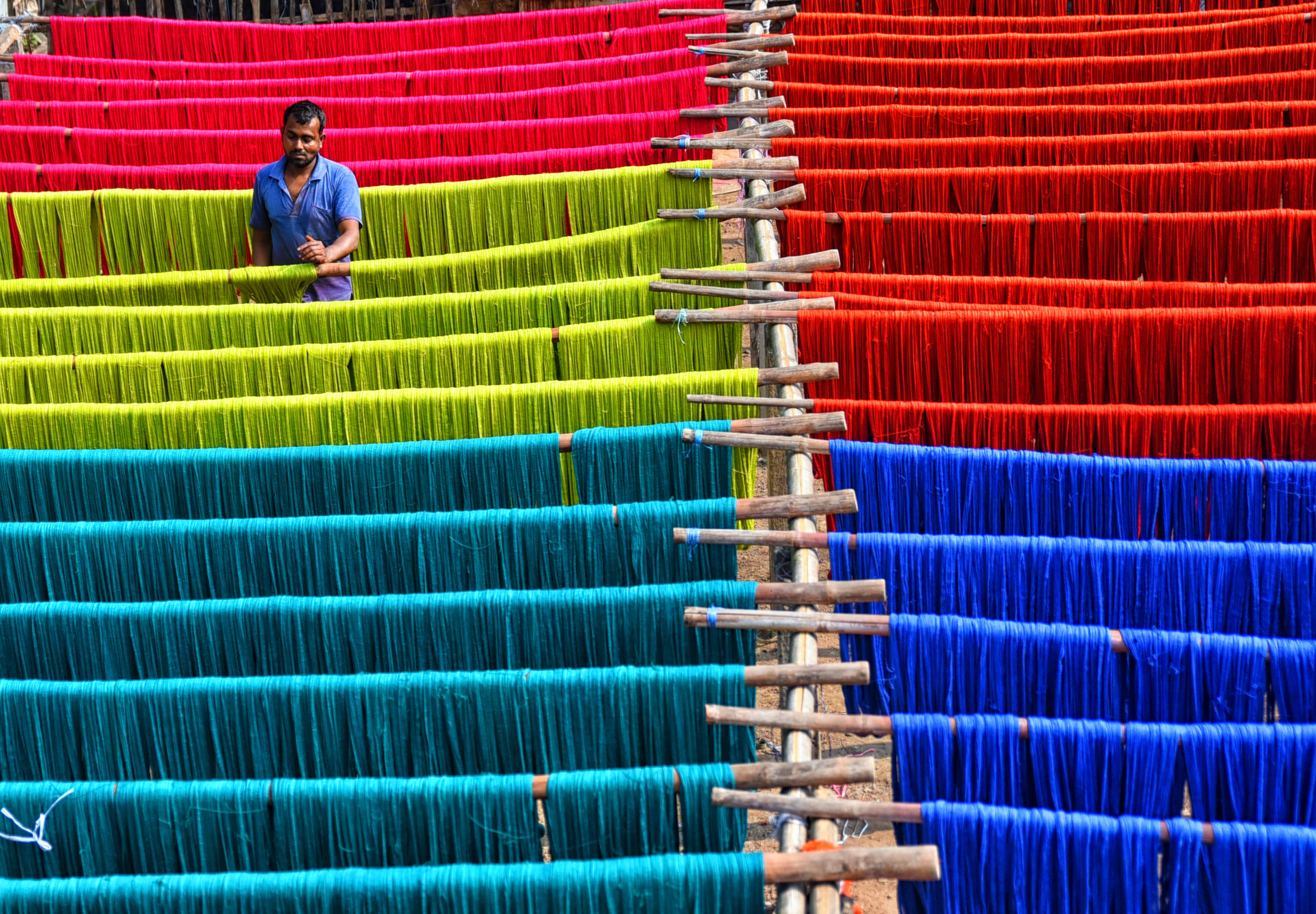Revive and Reimagine
Exploring the rich tapestry of traditional Indian upcycling

Slow and ethical fashion: Bunko Junko
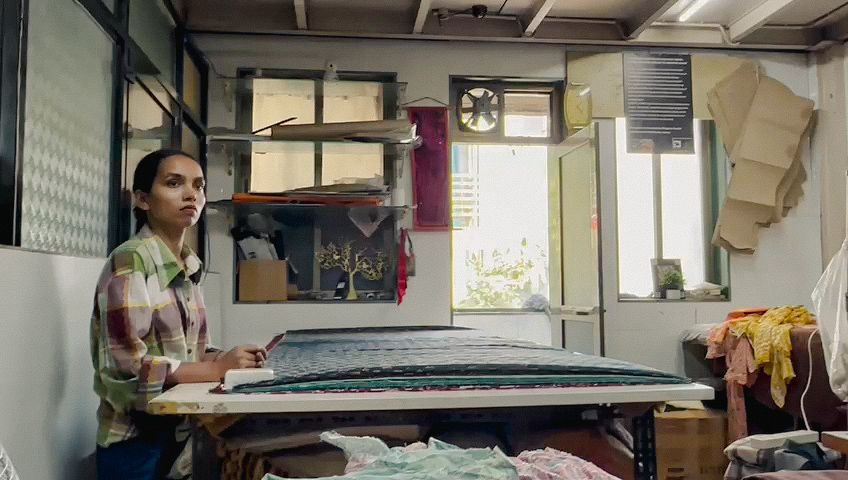
What is Bunko Junko?
Bunko Junko is an upcycling-focused fashion brand that believes in creating a positive social impact through its fashion endeavors. Bunko Junko embraces slow fashion principles by focusing on quality over quantity, this helps it align with Sustainability Goal 12 initiative started by the UN.
The brand collaborates with local artisans and weavers, providing them with fair wages and dignified working conditions. By supporting traditional craftsmanship and empowering local communities, Bunko Junko plays a pivotal role in preserving cultural heritage and ensuring the livelihoods of skilled artisans.
By opting for sustainable materials, the brand reduces the use of harmful chemicals and promotes a healthier and more sustainable approach to fashion production.
The brand promotes equal opportunities and celebrates the unique talents and skills of individuals from various backgrounds.
From ensuring fair wages and safe working conditions to promoting gender equality and responsible sourcing of materials, the brand prioritises ethical considerations at every step of the fashion production cycle.
The brand designs timeless pieces that can be cherished for years, promoting a more conscious consumption mindset. Bunko Junko encourages customers to invest in durable and versatile garments.
Bunko Junko utilises eco-friendly and natural fabrics, such as organic cotton, handwoven textiles, and plant-based dyes. These high quality materials encourage long-term usage and thus promotes slow fashion.
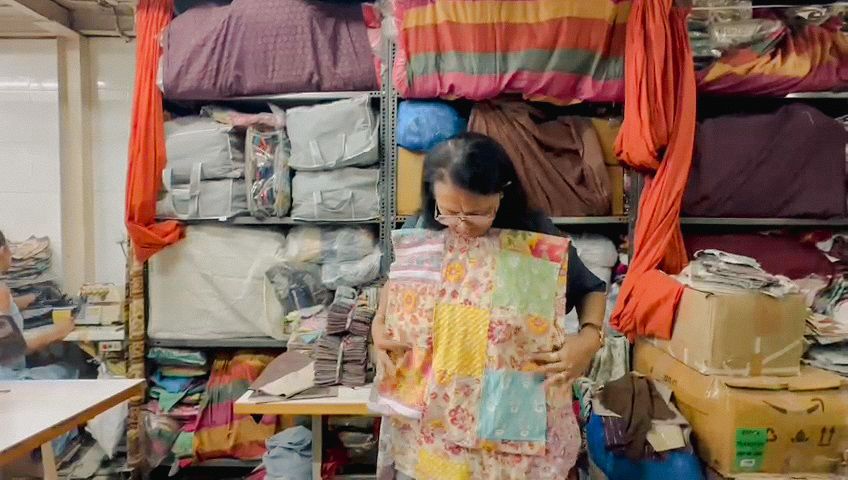
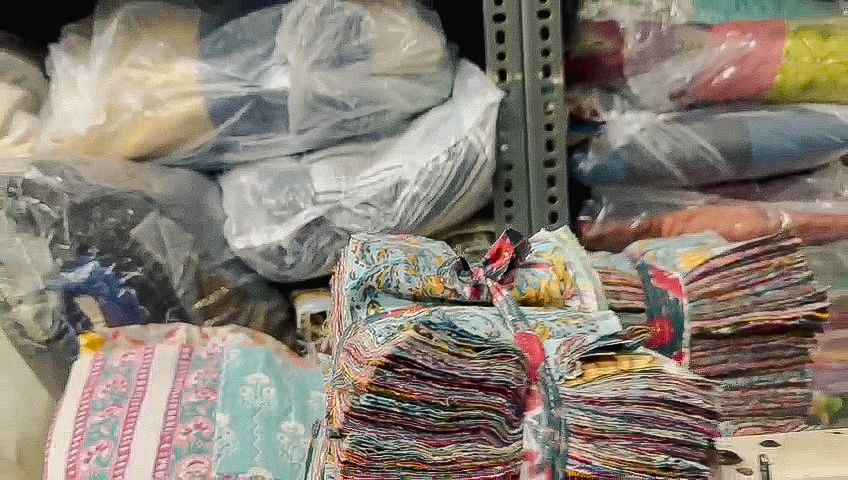
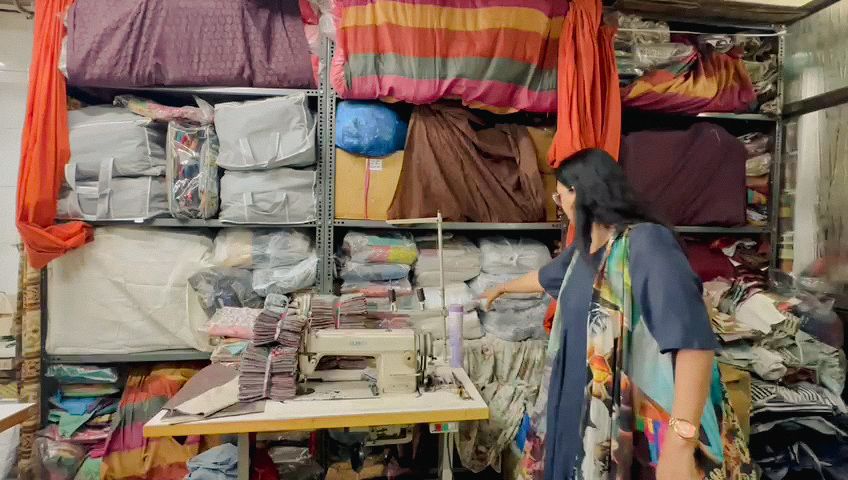
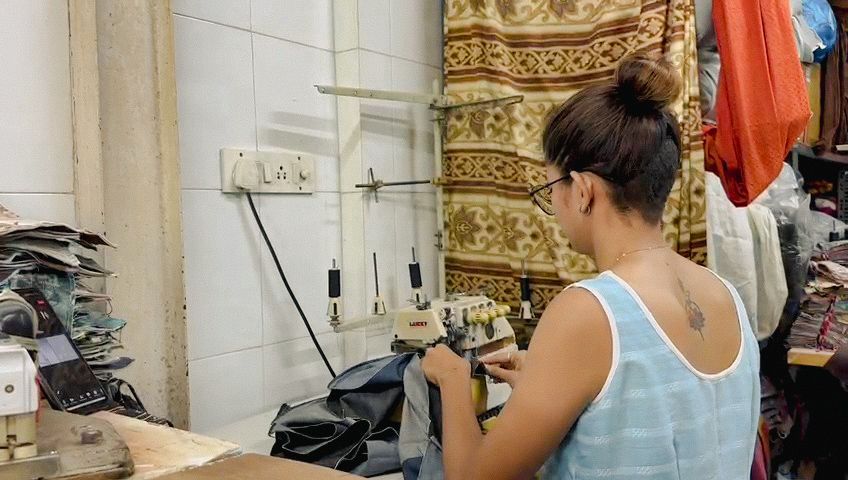




Fashioning protective gear for rag-pickers
Fashion student Manaswi Mittal showcases her designs for protective clothing, interviewed by Nandini Chaudhry, Riya Karnani and Sanya Thareja
Designing for those who deal with waste: Manaswi Mittal, a student of Fashion Design, at Pearl Academy, Delhi, designs protective gear for ragpickers with waste fabrics.
Designing for those who deal with waste: Manaswi Mittal, a student of Fashion Design, at Pearl Academy, Delhi, designs protective gear for ragpickers with waste fabrics.

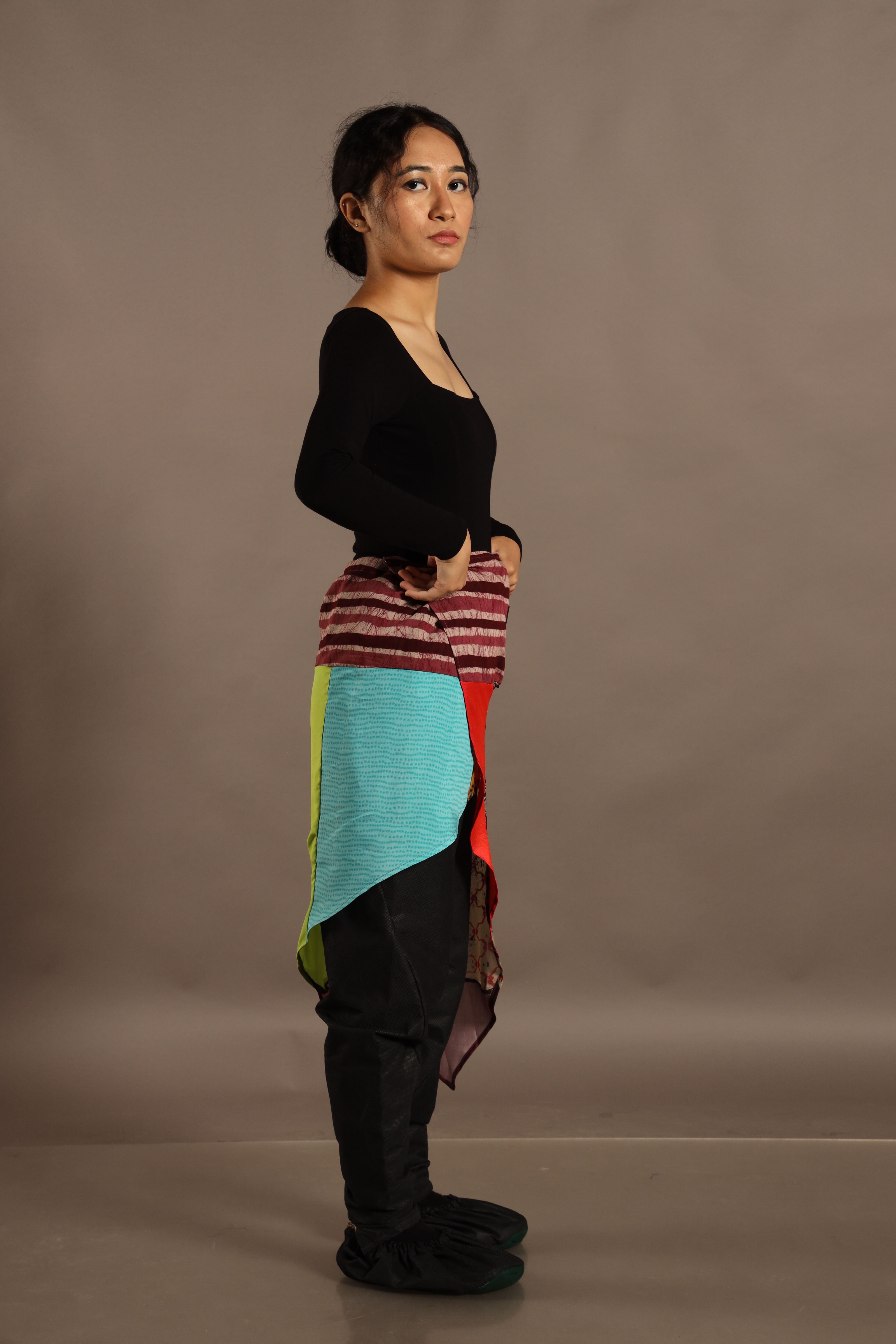
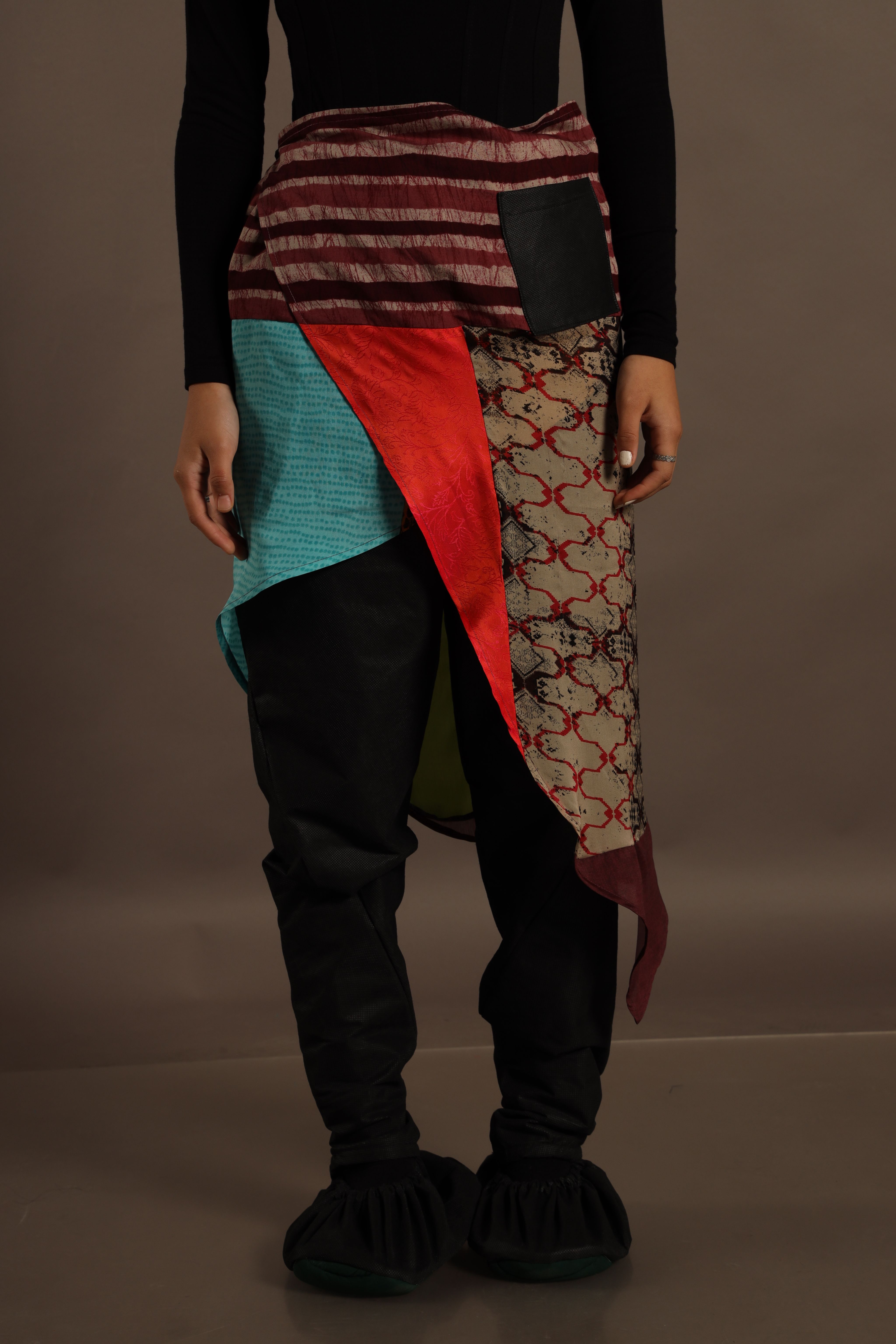

Shoe covers are made from polypropylene with poly-fill cushioning to protect the feet. Ragpickers are often exposed to harmful materials and sharp objects.
Shoe covers are made from polypropylene with poly-fill cushioning to protect the feet. Ragpickers are often exposed to harmful materials and sharp objects.

Pants are made using polypropylene on the outer shell, making the fabric stronger, with an inner lining of cotton textile waste to allow absorption and comfort against the skin.
Pants are made using polypropylene on the outer shell, making the fabric stronger, with an inner lining of cotton textile waste to allow absorption and comfort against the skin.

Modelled on designer Holly McQuillan’s zero waste pattern cutting method, the trousers have a drawstring for comfort and a drape, keeping in mind the cultural mores of Asian countries.
Modelled on designer Holly McQuillan’s zero waste pattern cutting method, the trousers have a drawstring for comfort and a drape, keeping in mind the cultural mores of Asian countries.
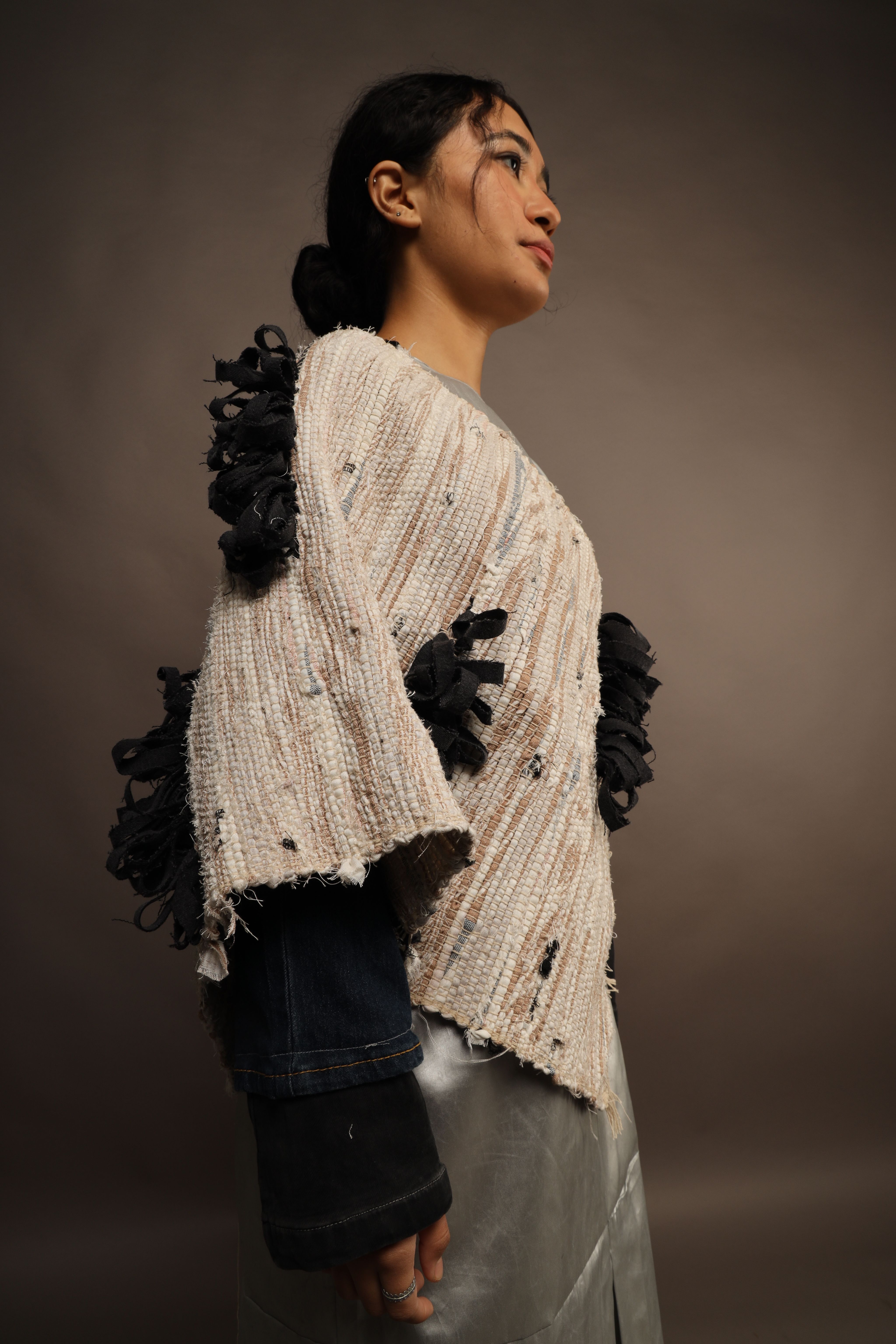
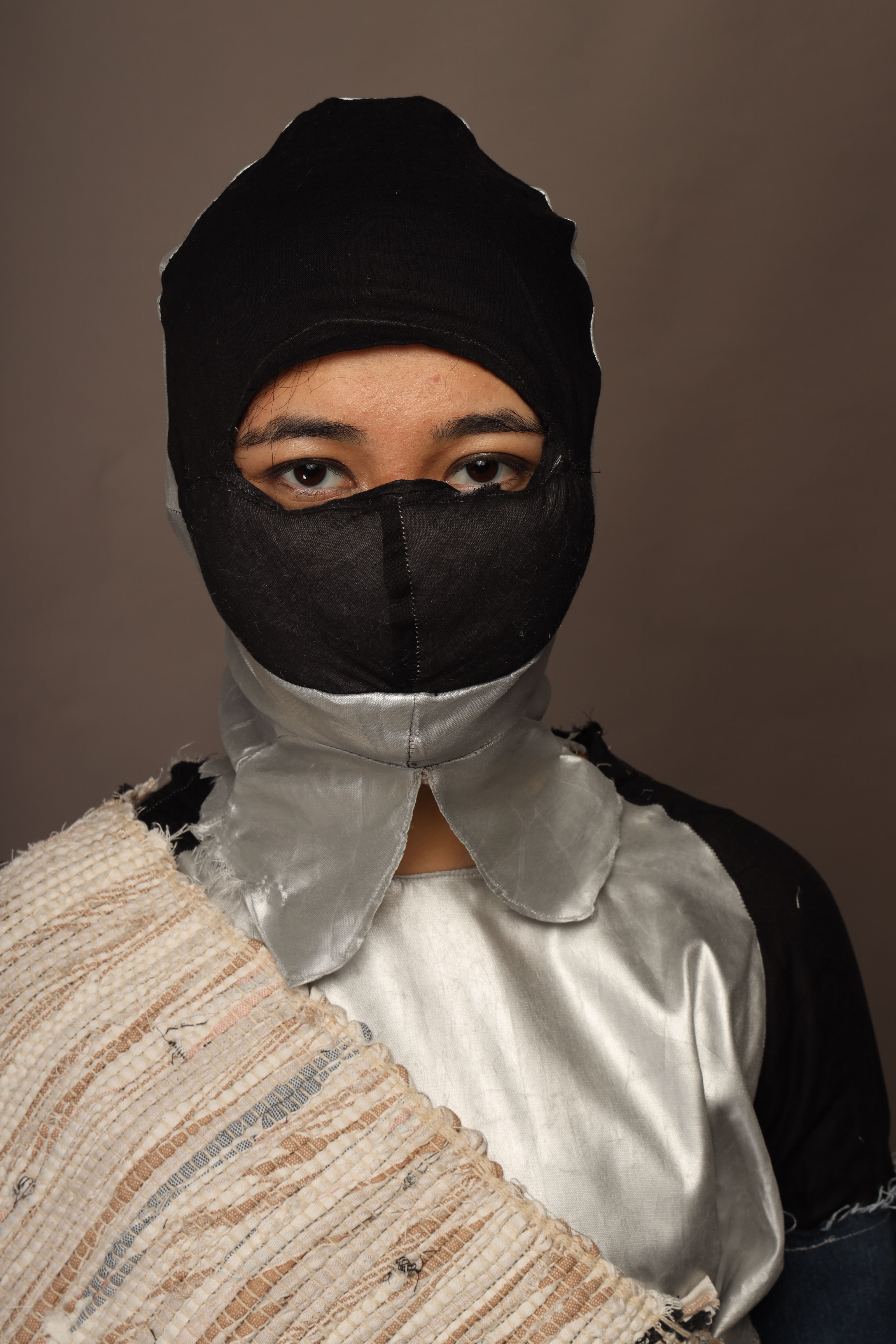
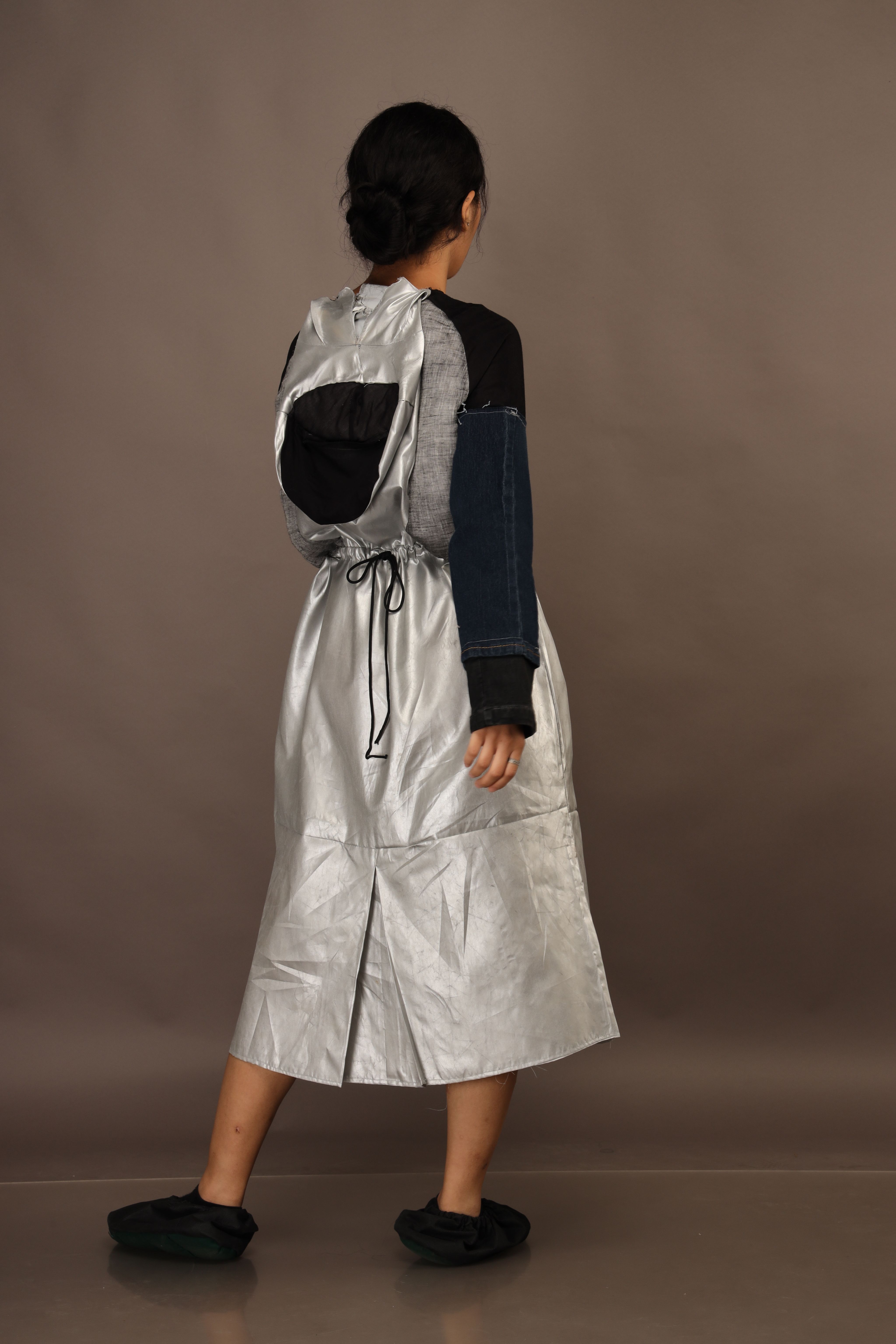

Remnants of a hand-woven durrie cover the chest region to act as protection against sharp objects for the garbage collectors.
Remnants of a hand-woven durrie cover the chest region to act as protection against sharp objects for the garbage collectors.

The dress has a face mask covering the head, mouth and nose, as well as the neck to guard against pollution and harsh sunlight.
The dress has a face mask covering the head, mouth and nose, as well as the neck to guard against pollution and harsh sunlight.

The back of the dress has drawstrings to adjust the size, and panels at the lower end of the garment to allow movement.
The back of the dress has drawstrings to adjust the size, and panels at the lower end of the garment to allow movement.
Patchwork and quilting: A traditional upcycling technique in India
by Maansi Sharma
Patchwork and quilting, a traditional craft that has been passed down through generations, is not only a beautiful form of artistic expression but also an effective upcycling method.
Originating from the necessity of making the most out of limited resources, this age-old practice involves repurposing fabric scraps and remnants to create stunning quilts and other textile creations.
In a world focused on sustainability and reducing waste, patchwork and quilting have gained renewed attention for their inherent upcycling nature. By breathing new life into discarded or unused textiles, these techniques offer a meaningful and eco-friendly way to transform remnants into functional and visually appealing pieces.
The textile skills of patchwork and quilting have been practised for generations in India. The creative fusion of diverse fabric remnants is used in these age-old methods to produce beautiful patterns and designs. They not only have a nice look, but they also provide a sustainable method of reusing and upcycling used textiles.
Patchwork and quilting are typically produced on a small scale and involve local artisans. This decentralised production model supports local economies and reduces the carbon footprint associated with large-scale manufacturing and transportation. By valuing handmade products, consumers are encouraged to make more conscious choices and support sustainable and responsible consumption.
History of patchwork and quilting in India
During the Mughal era, patchwork and quilting flourished as a form of artistic expression. The royal courts patronised these crafts, resulting in the development of intricate designs and exquisite craftsmanship. The quilts made during this period, known as 'razais', were filled with cotton, silk, or wool, and adorned with delicate embroidery.
Siddi Techniques: A Unique Contribution: The Siddis, an African-Indian community residing mainly in Gujarat and Karnataka, have made significant contributions to the art of patchwork and quilting in India. Known for their expertise in using geometric patterns and bold colors, Siddi quilts are recognised for their vibrant aesthetics. The Siddi women employ a technique called 'kawandi' to create quilts by stitching together layers of fabric using running stitches, creating an exquisite display of texture and design.
Use of patchwork and quilting today
In contemporary India, patchwork and quilting have found diverse applications and have been embraced by artisans, designers, and enthusiasts across various creative domains.
1. Home Decor: Patchwork quilts have gained popularity as statement pieces for home decor. They are used as bedspreads, throws, and wall hangings, adding a touch of colour, texture, and warmth to interiors. The intricate designs and vibrant patterns of patchwork quilts create a visually appealing focal point in any room.
2. Fashion and clothing: Patchwork and quilting techniques have made their way into the fashion industry in India. Designers incorporate patchwork elements into garments, such as jackets, dresses, skirts, and bags, adding a unique and artistic touch. Patchwork fabrics, with their contrasting colors and textures, create visually striking and one-of-a-kind fashion pieces.
3. Accessories and bags: Patchwork and quilting techniques are widely used to create accessories and bags. Artisans and designers craft vibrant patchwork handbags, backpacks, pouches, and clutches, often combining different fabrics and patterns to create eye-catching and functional pieces.
4. Social and community initiatives: Patchwork and quilting also play a significant role in social and community initiatives. Women's self-help groups, NGOs, and cooperative societies often teach patchwork and quilting skills to empower women and provide them with sustainable livelihood opportunities. These initiatives not only preserve the craft but also promote women's economic independence and social well-being.
5. Non-profit Organisations: Patchwork and quilting hold deep cultural significance in India. NGOs recognize the importance of preserving these traditional crafts and ensuring their continuity for future generations. Through their initiatives, these organizations contribute to the preservation of cultural heritage and the revival of dying art forms.
Many NGOs focus on reviving and supporting artisan communities that specialise in patchwork and quilting. NGOs actively collect textile waste, including discarded fabrics, old clothes, and scraps, and repurpose them through patchwork and quilting. By transforming waste into valuable products, they reduce the burden on landfills and contribute to a circular economy.
The future of patchwork and quilting in India
The importance of upcycling and sustainability are becoming more widely recognised, and this has tremendous implications for the future of patchwork and quilting. By fusing conventional methods with modern ideas and empowering artisanal communities
1. Revival and preservation of traditional crafts: Traditional crafts, such as patchwork and quilting, are receiving new attention in India as sustainable alternatives to mass-produced commodities. Traditional crafts are revived and promoted by groups like Dastkar and Craft Revival Trust to ensure their survival and usefulness in the modern world.
2. Environmental concerns and upcycling: As people become more conscious of the negative effects that textile waste has on the environment, there is a rising demand for upcycled goods. The use of fabric scraps in patchwork and quilting effectively reduces waste and encourages sustainability. The emphasis on upcycling is consistent with the circular economy's tenets of effective resource use.
3. Combining traditional patchwork and quilting techniques with modern design sensibilities: Craftspeople and designers are fusing traditional patchwork and quilting techniques with modern design sensibilities, creating inventive and one-of-a-kind goods. Patchwork and quilting are more appealing to consumers as a result of the blending of traditional and modern aesthetics.
4. Skills development and empowerment: Efforts are being made to train and assist patchwork and quilting craftspeople, equipping them with opportunities for a sustainable way of life. In order to ensure the preservation of these crafts and the economic empowerment of artisans, skill development programmes are being developed by NGOs, government initiatives, and community organisations.
In India, traditional upcycling methods like patchwork and quilting have a long history and are still popular today. They bring a little bit of old-world elegance to modern surroundings and exemplify the beauty of sustainability and repurposing. Patchwork and quilting have a bright future in India as they discover new ways to express themselves in the fashion, home decor, and art industries. Adopting these crafts allows us to pay homage to our cultural heritage while also fostering a more sustainable and exciting future.
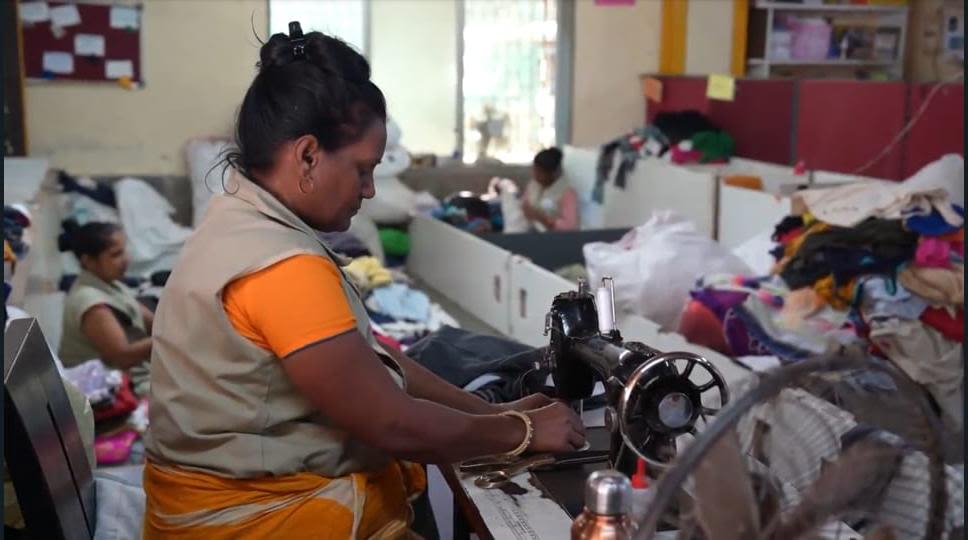
picture credit: Soumya Singh
picture credit: Soumya Singh

Bag upcycled from discarded denim.
Bag upcycled from discarded denim.

Photo by Saubhagya gandharv on Unsplash
Photo by Saubhagya gandharv on Unsplash

Photo by Patrick Hendry on Unsplash
Photo by Patrick Hendry on Unsplash
From needle to thread: exploring the craftsmanship of Sindhi quilts
by Suveer Singh
Sindhi quilts, also known as ralli quilts, are a traditional form of textile artistry originating from the Sindh region in Pakistan and parts of northwest India. These quilts have a rich history and cultural significance within the Sindhi community.
Sindhi quilts are deeply rooted in the cultural heritage of the Sindhi people. They have been used for various purposes, including weddings, births, and religious festivals. Quilting is considered a form of creative expression and an important part of Sindhi women's identity and craftsmanship.
They are made using a patchwork technique where small pieces of fabric are stitched together to create intricate designs. The quilts feature a wide range of geometric shapes, including squares, triangles, and diamonds, which are combined to form intricate patterns. The designs often incorporate bright and vibrant colours, reflecting the cultural aesthetics of the region.
The quilts often incorporate symbolic elements and storytelling. The patterns and motifs used in the quilts may represent different aspects of Sindhi culture, such as nature, animals, folklore, and religious beliefs. These quilts serve as a means of preserving and passing down cultural heritage from one generation to another.
While the traditional techniques and patterns of Sindhi quilts are still practised, contemporary adaptations have also emerged. Modern Sindhi quilts may incorporate machine stitching, synthetic fabrics, and a blend of traditional and contemporary designs. These adaptations cater to changing market demands and preferences.
Sindhi quilting has significant economic and social implications for the region. It provides a source of income for many women in rural areas who engage in quilting as a means of livelihood. Additionally, organisations and cooperatives have been established to support and promote the craft, empowering women artisans and preserving the cultural heritage.
The Craftsmanship of Sindhi Together Cultural Heritage Quilts: Stitching
The cornerstone of Sindhi quilting lies in its meticulous patchwork technique. Skilled artisans select and cut small fabric pieces in various shapes, often guided by templates or their intuition. These pieces are then meticulously stitched together using fine needlework, creating intricate patterns and designs.
The precision required to align these disparate pieces is a testament to the artisans' patience, attention to detail, and dedication to their craft.
The heritage and craftsmanship of Sindhi quilts have stood the test of time, but in the face of modern challenges, their preservation is more important than ever. As globalisation, changing market dynamics, and shifting cultural landscapes pose obstacles to traditional crafts, efforts are underway to protect the legacy of Sindhi quilts and support the artisans who keep this art form alive. In this blog post, we explore the contemporary challenges faced by Sindhi quilts and the various initiatives and preservation efforts aimed at ensuring their continuity.
Sustaining the art of Sindhi quilting requires addressing the economic challenges faced by artisans. The time-consuming nature of quilt-making and the need for fair compensation pose hurdles to the artisans' economic well-being. By establishing fair-trade practices, providing access to markets, and promoting the value of handmade crafts, initiatives are working to enhance the economic viability of Sindhi quilting and secure sustainable livelihoods for artisans.
Furthermore, conducting in-depth studies, documenting patterns, techniques, and historical context, scholars and organisations contribute to the understanding and appreciation of this textile art form. Such efforts not only provide valuable insights but also form the foundation for educational programs, exhibitions, and publications that raise awareness about Sindhi quilting.
Sindhi quilts hold the power to transform lives and communities
Through their creation and promotion, these textile treasures contribute to economic empowerment, social cohesion, and the preservation of cultural heritage. In this blog post, we explore the economic and social impact of Sindhi quilts, shedding light on how they serve as catalysts for positive change and sustainable development.
It also provides a source of economic empowerment for countless individuals, especially women, in rural communities. By engaging in quilt-making, artisans can earn a sustainable income and support their families.
The craft enables them to transform their creative skills into livelihood opportunities, fostering financial independence and economic resilience.
Through quilt-making, women gain economic agency and decision-making power within their households. The income generated from their craft enhances their status and influence, leading to greater gender equality, social transformation and promotion of slow fashion.
One of the core principles of Sindhi quilting is upcycling. The craft repurposes discarded and worn-out textiles, breathing new life into them. By rescuing and transforming textile waste, Sindhi quilting mitigates the environmental impact associated with textile production and reduces the amount of waste ending up in landfills. Sindhi Quilts also are in line with the UN's Sustainability Goal 12 in various ways such as:
The art of upcycling: Sindhi quilting embodies the spirit of upcycling, turning old fabrics into intricate quilts, bedspreads, and wall hangings. Artisans skillfully patch together colorful remnants, creating unique and vibrant designs. This approach to textile production fosters resourcefulness, creativity, and sustainability by utilising existing materials rather than relying on the extraction of new resources.
Promoting slow fashion: In a world dominated by fast fashion, Sindhi quilting stands as an advocate for slow fashion principles. The craft emphasizes quality over quantity, encouraging consumers to cherish and invest in durable, handmade products that can withstand the test of time. By promoting longevity and reducing the demand for mass-produced items, Sindhi quilting supports a more sustainable and conscious approach to fashion.
Empowering artisans: Sindhi quilting has provided a source of income and empowerment for many artisans, particularly women in rural communities. By supporting the craft, we contribute to sustainable livelihoods, economic growth, and the empowerment of marginalised individuals. Recognizing the value of their skills and craftsmanship ensures the preservation of this traditional art form for future generations.
Education and awareness: To truly promote sustainable consumption, raising awareness about Sindhi quilting and its environmental benefits is crucial. Through educational initiatives, exhibitions, and collaborations, we can encourage people to embrace the philosophy of upcycling, make informed choices, and appreciate the cultural and ecological significance of traditional crafts like Sindhi quilting.
Collaboration and innovation: Exploring collaborations between Sindhi artisans and contemporary designers can bring fresh perspectives and innovation to the craft. By blending traditional techniques with modern aesthetics, we can widen the reach of Sindhi quilting and appeal to a broader audience, bridging the gap between tradition and contemporary fashion while staying true to the principles of responsible consumption and production.
Transforming textile waste: One of the core principles of Sindhi quilting is upcycling. The craft repurposes discarded and worn-out textiles, breathing new life into them. By rescuing and transforming textile waste, Sindhi quilting mitigates the environmental impact associated with textile production and reduces the amount of waste ending up in landfills.
Sindhi quilts stand as a testament to the resilience, creativity, and cultural identity of the Sindhi community. As we appreciate and support Sindhi quilting, we become part of a legacy, preserving the artistry, empowering communities, and celebrating the enduring beauty of these magnificent textiles for generations to come.
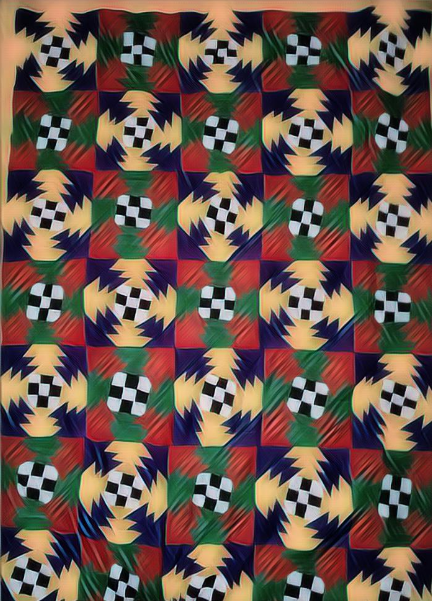
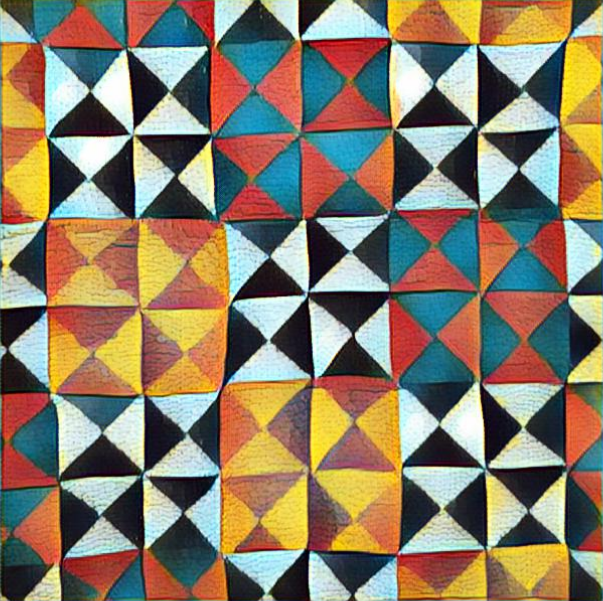
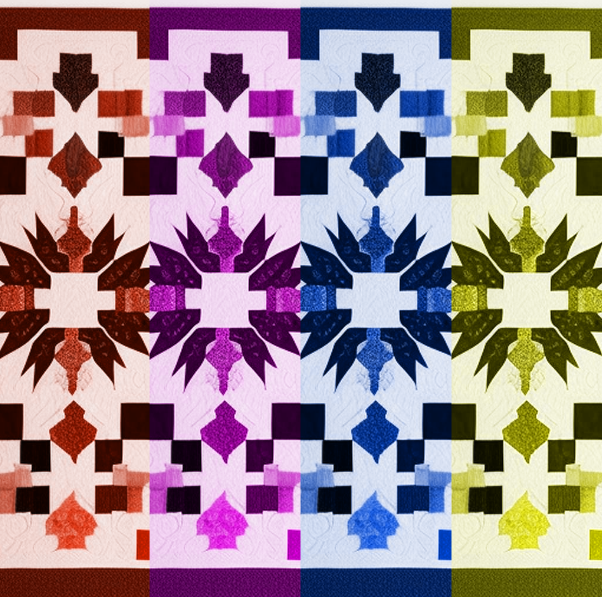
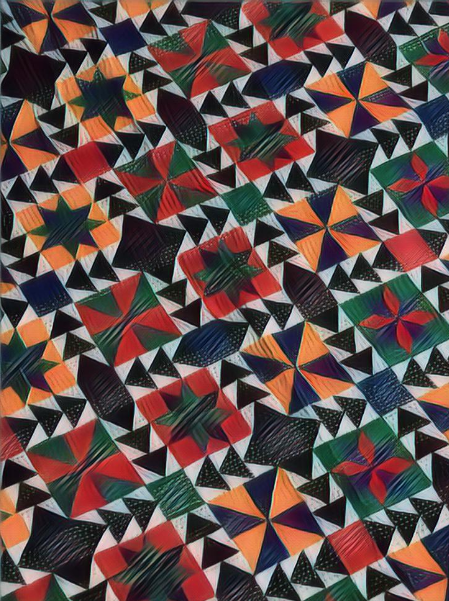
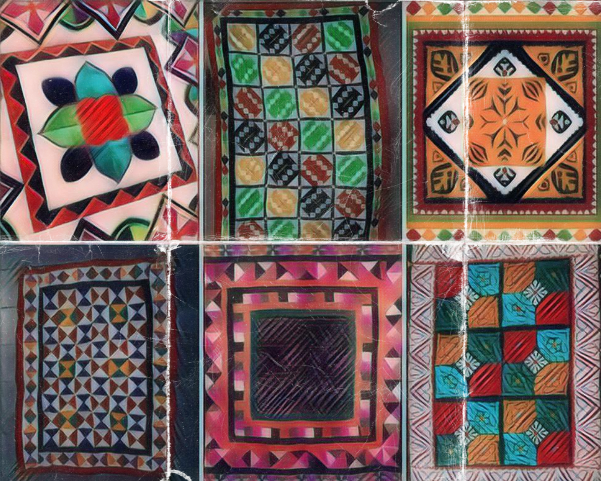
Kantha: A traditional way of preserving the environment
by Surbhi Kabra
The Kantha is a traditional needlework that uses old cloth pieces to give them a new form. It has been traditionally used for centuries in rural India.
One of the oldest needlework techniques, Kantha, was developed in India and is today practiced by millions of South Asian women. Before being reintroduced in the 1940s by the daughter-in-law of the renowned Bengali poet and Nobel laureate Rabindranath Tagore, this art form, which had its beginnings in the remote regions of Bengal, vanished in the early 19th century.
While the word Kantha does not have a derived meaning to it, it is believed that the word is rooted in the Sanskrit word Kontha, meaning rags. Being one of the oldest forms of embroidery originated in India, its emergence can be traced back to the pre-Vedic age (earlier than 1500 BCE).
However, the earliest written record date to 500 years ago. In the book Sri Sri Chaitanya Charitamrita, the poet Krishnadas Kaviraj mentions how the mother of Chaitanya sends him a homemade Kantha to his son in Puri through some devotees. The same Kantha is displayed at Gambhira in Puri.
Along with all the other traditional textiles, Kantha was inspired by the available material, daily requirements, climate, geography, and economic factors. Traditionally textile production was considered to be one of the most labor-intensive industries and hence the textiles were considered of high value.
Thus, recycling used clothes into rugs was a very logical step taken in the global lifetime of textiles. Given that this recycling process was more of a work from home, it was mainly of the women of the village to put together, cut, and sew the rags thus, the material was restored.
Sustainable Development Goal No. 12 (SDG No. 12) on responsible consumption and production can be linked to the Indian subcontinent's Kantha, a traditional embroidery method. By increasing resource efficiency, reducing waste, and promoting environmentally friendly behaviors, SDG 12 strives to ensure sustainable patterns of consumption and production.
- Kantha is a technique for creating new clothing, quilts, or household items by sewing together layers of old or abandoned textiles. Kantha encourages waste reduction and lessens the need for the extraction and development of new resources by reusing and upcycling these materials.
- Sustainable textile practices: natural fibres like cotton or silk, which are biodegradable and have a smaller environmental impact than synthetic materials, are usually used in Kantha. Kantha promotes ethical textile manufacturing and consumption by utilizing sustainable textile practices.
- Preservation of cultural heritage: the traditional craft of Kantha embroidery has been handed down through the generations. SDG 12 encourages the preservation of cultural history and traditional knowledge by assisting Kantha artisans and their craft. This fosters sustainable development by appreciating and fostering a variety of cultural expressions.
- Craftsmen’s empowerment: many craftsmen, particularly women in rural regions, rely on kantha stitching as a source of income. SDG 12 encourages sustainable development by fostering equitable and inclusive economic growth through the creation of economic opportunities and the empowerment of artisans.
Typically, threads coming out from old cotton saris, dhotis lungis which had become incredibly soft through wear were used for making Kanthas.
In recent times Kantha is used more broadly to describe a particular stitch pattern. Ultimately and fundamentally the types of stitches are simple, straight, and running stitch which is usually used on the Kantha sari scarves.
With time the styles or the patterns changed and are known as ‘Nakshi Kantha.’ The word Nakshi is derived from the Bengali word, Naksha meaning artistic patterns. This pattern is highly influenced by the religion, the culture, and the lives of the women practising this art form.
This modest piece of textile gave new ground to the imaginations of the women, Kanthas represented religious beliefs, showcased cultural beliefs, displayed the themes and characters from mythology, the everyday lives of the artisans, their dreams, their hopes as well as their personal lives were demonstrated through this.
Even though there is no particular regularity in Nakshi Kantha, the designs usually have a lotus as their focal point surrounded by contemporary designs of birds, plants, fish, flowers, and other sites surrounding them.
The process of making a Kantha is prolonged as the fabrics are first cut to shape and layered to achieve the desired thickness. The layers are then spread at the ground and ironed. The artisans then stitch the edges of the cloth with some loose and large basting to hold the whole piece of fabric together. The finer Kantha is then started, which is started from one corner, and short and parallel lines are made to avoid any kind of deformation and creases in the fabric.
Now, more designers are seeing the value of incorporating fair trade practices into their work, and you can purchase ethically created Kantha products like those created at House of Wandering Silk.
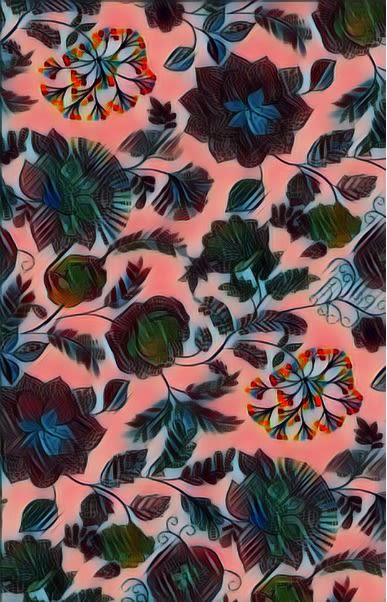
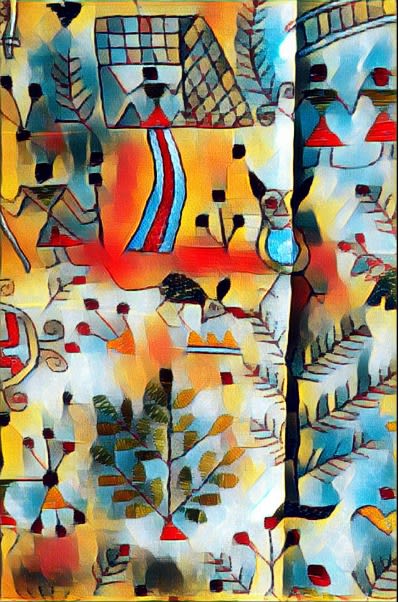
Sujani embroidery: Bihar's stunning fabric art!
by Riya Bajaj
Sujani is an embroidery style where old sarees and dhotis are used to give discarded clothes a new look. It is a traditional embroidery technique which is originated in Bihar.
In a diverse nation like India, needlework has long been a speciality of women. Stitching is still a valuable skill for every significant event in a woman's life, including weddings, births, and religious celebrations. That’s how Sujani embroidery came into existence in the state of Bihar. Sujani is said to have started in the 1920s and was only used by Rajput ladies at the time.
It involves the use of simple running stitches to create intricate and decorative patterns on fabric. It is usually done on a base fabric, such as cotton or silk, with colorful threads. The stitches are often worked in geometric or floral designs, creating a textured and quilted effect.
Originally, Sujani embroidery was used to create quilts, blankets, and bed covers. The embroidery served both functional and decorative purposes, as the quilts provided warmth while the intricate designs added beauty.
Sujani embroidery has expanded to include a wide range of products, including garments, home decor items, and accessories
The motifs used in Sujani embroidery are inspired by nature, folklore, and daily life. Birds, animals, flowers, and human figures are common themes. The designs are usually created freehand, without any pre-drawn patterns, giving each piece a unique and improvisational quality.
Sujani embroidery is traditionally done by women in rural areas as a form of income generation and artistic expression. It is often passed down through generations, with mothers teaching their daughters the craft. Today, Sujani embroidery has gained recognition both within India and internationally for its intricate craftsmanship and cultural significance.
The popularity of Sujani embroidery has led to its inclusion in fashion collections, exhibitions, and craft fairs. It has also played a role in empowering women in rural communities by providing them with opportunities for economic independence.
Sustainable Development Goal 12 (SDG 12) focuses on ensuring sustainable consumption and production patterns. There are several ways in which Sujani embroidery can be linked to sustainable practices.
Sustainable materials: Sujani embroidery traditionally uses natural fabrics like cotton and silk, which are biodegradable and have a lower environmental impact compared to synthetic materials. By choosing sustainable materials, the craft promotes responsible consumption and reduces the reliance on resource-intensive fabrics.
Waste reduction: Sujani embroidery often incorporates upcycling or repurposing techniques. Old textiles, such as worn-out clothes or sarees, are frequently used as the base fabric for creating Sujani pieces. By reusing and transforming existing materials, this craft contributes to waste reduction and promotes a circular economy.
Local and traditional artisanal skills: Sujani embroidery is deeply rooted in local communities, where skilled artisans pass down their knowledge through generations. By supporting Sujani embroidery and other traditional crafts, consumers and organisations help preserve local artisanal skills and traditional knowledge. This contributes to sustainable development by valuing and promoting cultural heritage.
Empowering women and communities: Sujani embroidery is often practised by women in rural areas, providing them with opportunities for economic empowerment. By promoting and supporting Sujani embroidery, individuals and organisations can contribute to gender equality and poverty alleviation, which are essential aspects of sustainable development.
Ethical and fair trade practices: Supporting Sujani embroidery through fair trade practices, such as ensuring fair wages and safe working conditions for artisans, aligns with SDG 12's goal of promoting sustainable production and decent work for all.
Education and awareness: Promoting Sujani embroidery as a sustainable craft can raise awareness about the importance of preserving traditional techniques, supporting local artisans, and making conscious choices in consumption.
Sujani embroidery continues to thrive and evolve in the present day, combining traditional techniques with contemporary designs and applications. It has evolved to adapt to changing times while still maintaining its cultural essence. It continues to be a source of pride for artisans and communities, and its contemporary applications and sustainable practises make it relevant in today's world.
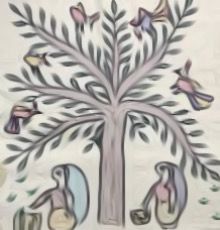

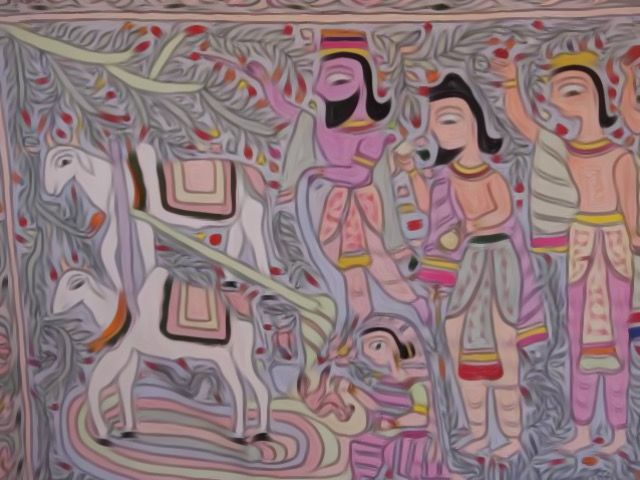
Unveiling the Goonj project's transformative journey
In a world where waste engulfs our landfills and the environment yearns for a glimmer of hope, there is an organisation that stands tall, championing the art of upcycling. This is Goonj, where every thread tells a story, and every discarded object finds a new purpose.
Goonj believes that every piece of material holds immense value, even in its discarded state. With this philosophy at its core, Goonj collects and upcycles various items, transforming them into resources that bring positive change to communities in need.
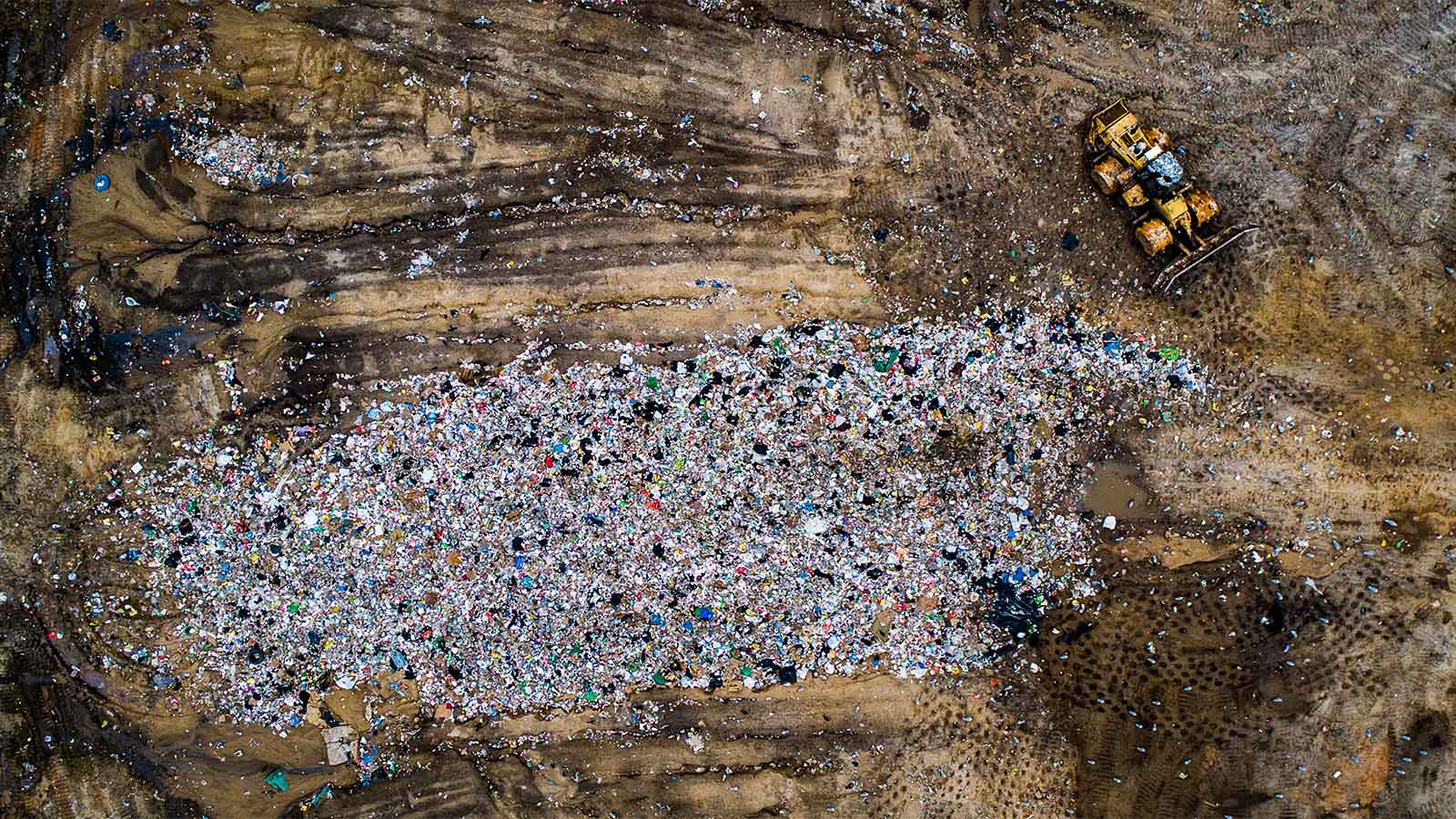
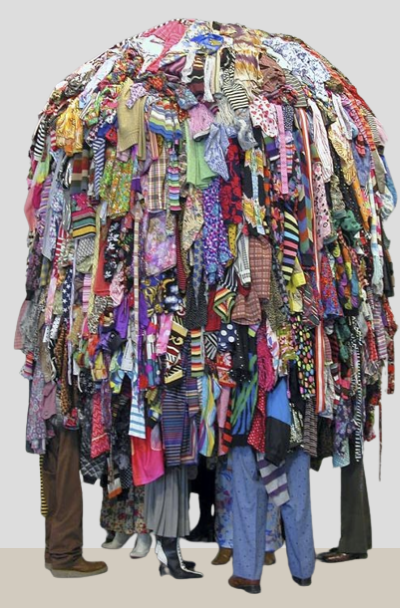
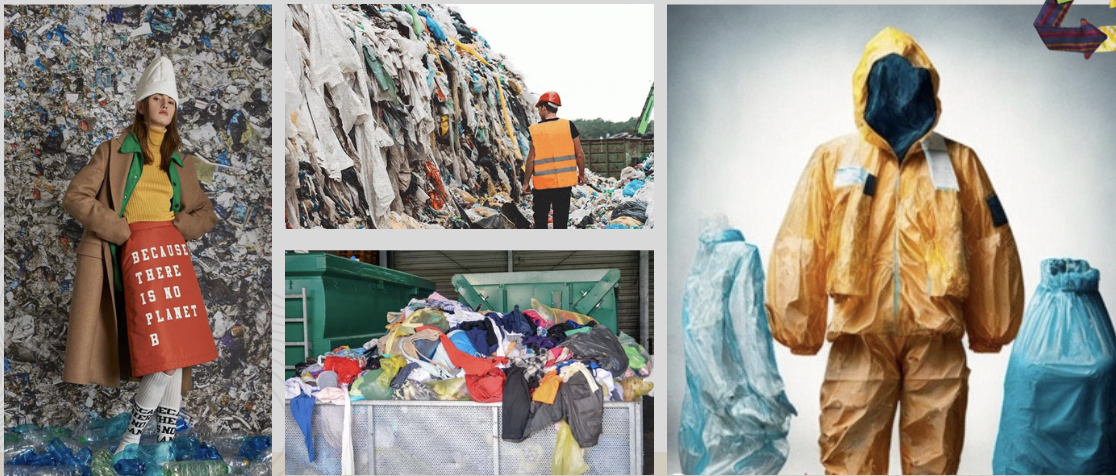

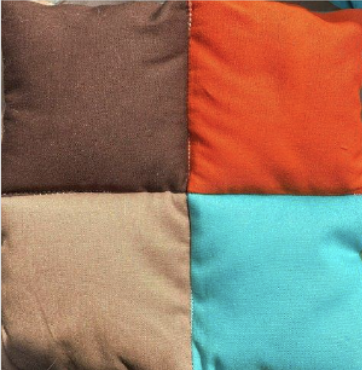

Landfill, recycling and textile waste in India
By Nandini Chaudhry and Riya Karnani
India faces significant challenges when it comes to landfill, recycling and textile waste management. Female ragpickers are crucial for the smooth functioning of waste management in India’s capital but thousands of them face dire conditions and struggle for survival.
Amounts of methane and carbon dioxide in the atmosphere (two gases that contribute to climate change and a rise in the planet's temperature), are affected by landfills. However, we do have some influence over how much garbage we dump in our landfills for bulky waste and how much we burn in our facilities for turning waste into energy.
To cut emissions and lower greenhouse gas emissions, we can cut waste, reuse resources, and recycle waste.
By 2030, the United Nations aim for all people to have access to green spaces that are accessible, inclusive, and safe, especially women, children, the elderly, and people with disabilities.
One way to do this is textile recycling and upcycling, which involves both the reuse and reproduction of fibres from textile waste.
Students from Pearl Academy, India experimented with recycled cotton yarn by the method of outlining and detailing different pieces of waste in their chosen colour palette. They then took each of the outlines and composed them together to resemble almost a floral pattern as this is seen a lot on the clothing worn by female ragpickers.
Another sample was made out from deadstock yarn ensuring there is less going to waste from industry. The lifted stitches created a soft and comfortable surfaces. Something we could incorporate into a final design. With this sample they wanted to experiment with texture and colour and reflect what they saw from imagery of landfills.
The speckled yarn translates the colours they have taken from the landfill images and the lifted stitches represent the uneven structure. One more sample created out of the same fabric ladders by dropping stitches, creating areas in which elements can be woven into the designs. This is something the students would like to take through to a final design.
They also experimented with waste satin silk macrame cord, using a technique called braiding and weaving. They first braided the waste satin silk macrame cords and then weaved those braids to make a colourful surface which can be further used to make colourful clothing for these women.
The students also used tie dye cotton cloth polypropylene (face mask) Stitching absorbant cotton fabric on the inside and breathable fabric and polypropylene on the outside.
By 2030, it is a UNESCO goal to lower the negative per capita environmental effect of cities, particularly by giving special attention to air quality and municipal and other waste management. Experts believe India has a flawed waste disposal system, with no proper segregation of waste at the source and an informal recycling system.
The poor disposal of waste is linked to poverty, bad governance, poor standards of living and a low level of environmental awareness.
The waste segregation and recycling system works through an informal operation. Ragpickers collect waste and sell it onto dealers, who sell it on to recycling plants. This means there is no proper documentation of their recycling, and relying on ragpickers to help the recycling process is not thorough and leaves much waste unrecycled.
Only 43 million tonnes are collected, 31 millions of which goes to landfills and a mere 12 million undergoes treatment (recycling, etc). The methane released from landfills has a great global warming potential, 23 times greater than the same amount of carbon dioxide.
Approximately 7,800 kilotons of textile waste is produced by India per year.
Textile waste in India varies. On a domestic level, households often upcycle day-to-day clothing and textiles – e.g, turning sarees into cushion cases.
On a larger scale, Kishco Group deals with a lot of clothing and textile recycling. Some materials are converted to fibres like poly waste yarn and is used in other textile products. Used clothing comprising of wool, acrylic and cotton are converted into re-generated fibre by Kishco Group.
Female ragpickers are crucial for the smooth functioning of waste management in India’s capital but thousands of them face dire conditions and struggle for survival. They are exposed to harmful substances, earn poor wages and suffer from a lack of public services. Many of them suffer from health issues, from breathing difficulties and dysentery to diarrheal and dengue fever.
Women ragpickers face a lot of problems like back pain, shoulder pain and fatigue. The rag pickers work under tough and hazardous conditions. They work long hours without any protective gear.
Doctors say there is a high prevalence of anaemia, skin problems such as fungal and bacterial diseases and respiratory illnesses among the workers.
According to research rag pickers generally suffer from:
- respiratory problems (19%)
- eye problems (40%)
- dermatological problems (22%)
- injuries (60.5%)
Additionally the high prevalence of general health problems such as fever (78%), cough and cold (83.5%), diarrheal and dysentery (40%) were reported to be high. Road accidents and fall (23%), animal bite (16.5%) and frost bite (16.5%) significantly are higher among rag pickers.
In order to sustain the way of life for both present and future generations, Goal 12 calls for sustainable consumption and production practises. The triple global catastrophes of climate change, biodiversity loss, and pollution are all caused by unsustainable patterns of production and consumption.
The wellbeing of people and the accomplishment of the Sustainable Development Goals are threatened by these crises and the associated environmental deterioration. In order to increase resource efficiency, lessen waste and pollution, and create a new circular economy, governments and all citizens need to collaborate.
Two of targets of Sustainable Development Goal 12 are:
- To minimise the negative effects on human health and the environment, by 2020, achieve environmentally sound management of chemicals and all wastes throughout their life cycles, in accordance with accepted international frameworks, and drastically reduce their release to air, water, and soil.
- Reduce waste production by a significant amount by 2030 through practising trash avoidance, reduction, recycling, and reuse.
Personal protection equipment (often known as PPE) is clothing used to reduce exposure to risks that might result in significant workplace diseases and injuries. Contact with chemical, radioactive, physical, electrical, mechanical, or other job hazards may cause these wounds and illnesses.
Items like gloves, safety goggles, shoes, earplugs or muffs, hard hats, respirators, or coveralls, vests, and full body suits are examples of personal protection equipment.
All personal protective equipment must be designed and built safely, and it must be kept in a hygienic and dependable manner. It should be snug enough to encourage worker use. Fit issues with personal protective equipment might mean the difference between being safely covered and being dangerously exposed.
Employers are required to supply personal protective equipment to employees and oversee its correct usage in situations where engineering, work practise, and administrative controls are impractical or insufficiently protective.
The students from Pearl Academy studying fashion design took this problem and tried to create protective clothing. The following are the points that where considered in the process of making them.
- Light colour = show carbon contamination.
- Gloves made from elk leather & nomex = washable. Toxic workplace uniform, full protection
- Bright colour = easily visible. High visibility vest/clothing, hard hats, work boots, safety goggles.
The creation of protective clothing using upcycled cloths offers several benefits. Upcycling is the process of turning waste materials into new things that have value added. Upcycling can support sustainability initiatives and encourage a more ecologically friendly attitude to fashion and safety when used with protective equipment.
Environmental sustainability: Upcycling helps to lessen the negative effects of clothes manufacture on the environment by reducing waste and the requirement for new raw materials. Utilising current materials and fabrics reduces the need for new resources like water, electricity, and chemicals. This helps reduce the damaging effects of the fashion industry on the environment and helps preserve natural resources.
Reduced textile waste: The textile sector produces a significant quantity of waste, including abandoned clothing and fabric remnants. These materials can be upcycled into protective apparel to extend their useful lives and keep them out of landfills. Upcycling decreases the overall amount of textile waste and encourages a more circular economy by reusing and redesigning them into new items.
Uniqueness and customisation: The design of protective gear can be made with creativity and personalization thanks to upcycling. Each piece can be distinctive by utilising various fabric patterns, hues, and textures. This element of upcycled apparel gives the protective gear more personality and character, making it more desirable to customers looking for personalised and one-of-a-kind things.
Cost-effectiveness: Recycled clothes might be less expensive than new safety equipment. Utilising old materials greatly lowers the production costs associated with buying new fabrics and resources. Protective gear may become more accessible and inexpensive because to its cost-effectiveness, especially for those with limited financial resources.
Community involvement and social impact: Upcycling efforts can open doors for regional craftspeople and communities. Upcycled protective clothing projects can support the socioeconomic growth of communities by utilising locally sourced materials and collaborating with small-scale manufacturers or artisans. This interaction empowers people and promotes social cohesiveness by supporting entrepreneurship, skill development, and innovation.
Recycled safety gear must still adhere to all applicable regulations and standards. The protective qualities or robustness of the clothes must not be compromised by the changing of the materials.
Producing protective garments from repurposed materials has various positive effects on the environment, the economy, and society. It promotes innovation, eliminates waste, increases sustainability, and can lower the cost and increase accessibility to protective gear. We can develop a more sustainable and accountable method of producing protective garments by adopting upcycling techniques.
Developing a sustainable supply chain in the ecosystem
by Sanya Thareja
The sustainability of the textile supply chain in India is a mixed picture. While there are efforts being made towards sustainability, challenges remain.
The sustainability of the textile supply chain in India is a complex issue with varying levels of progress. While attempts are being made to achieve sustainability, problems remain.
Ethical
The sector as a whole continues to face serious environmental and social issues. The supply chain's remaining fraction has yet to fully embrace sustainable practises, particularly in terms of lowering environmental impact and ensuring fair labour practises. There is a requirement for ongoing dedication.
In the textile business, the concept of a sustainable supply chain extends beyond the production and distribution of clothes. It includes practices that reduce environmental impact, promote social responsibility, and adhere to the ideals of the circular economy.
Upcycling is one technique to improve sustainability in the textile supply chain. It is the process of recycling discarded or under-utilised materials into new, higher-value goods. Textile firms may decrease waste, conserve resources, and extend the lifespan of materials by adding upcycling into the supply chain.
Textile scraps or torn garments can be transformed into new designs, accessories, or even industrial applications as part of an upcycling programme.
Textile companies can contribute to a more circular, sustainable strategy by incorporating upcycling practises into the supply
chain, reducing dependency on virgin materials and trash sent to landfills.
Creativity
Furthermore, upcycling may stimulate creativity, innovation, and collaboration within the business while also offering consumers with unique and ecologically responsible products.
In terms of sustainable supply chain practises, textile manufacturers in India are becoming more aware of the necessity of decreasing environmental effect and promoting social responsibility.
Many businesses have taken steps to improve resource efficiency, introduce environmentally friendly technologies, and promote responsible sourcing. Some firms have also prioritised waste management and recycling, looking for ways to reduce textile waste and reuse materials.
A sustainable supply chain in the fashion industry has several environmental and societal benefits. First, it decreases the industry's environmental footprint by reducing resource consumption, supporting responsible material procurement, and applying eco-friendly manufacturing practices. This involves employing organic and recycled fibres, conserving water and energy, and implementing waste management practises that are efficient.
Second, a sustainable supply chain promotes social equality and worker wellbeing by ensuring fair labour practices and safe working conditions for all workers participating in the production process. It also helps local communities and promotes economic growth by partnering on responsible sourcing and production.
Transparency
A sustainable supply chain promotes transparency and traceability, allowing consumers to make educated decisions and fostering accountability across the fashion sector. The fashion industry can contribute to a healthier environment, better labour conditions, and a more ethical and responsible fashion ecosystem by implementing a sustainable supply chain.
In recent years, the upcycling movement in India's textile sector has gained traction. There have been numerous efforts and organisations that promote upcycling as a way to decrease textile waste and generate creative goods. These efforts not only reduce the environmental burden, but also provide economic prospects by capitalising on the growing demand for sustainable and one-of-a-kind textile items.
Difficulties
Despite this improvement, difficulties remain. One of the most significant issues is the requirement for widespread adoption of sustainable practices across the whole supply chain. While some manufacturers have embraced sustainability, a sizeable section of the business continues to lag.
Limited awareness, cost considerations, and infrastructural constraints impede widespread adoption of sustainable practices and upcycling programmes.
When the textile industry's supply chain in the fashion sector is not sustainable, it has a negative impact on the environment, society, and the industry's overall reputation. Unsustainable supply chain practices frequently involve excessive resource usage, water contamination, and carbon emissions. Excessive use of chemicals and dyes can pollute water and destroy ecosystems.
Fast fashion
The fast fashion model, which is based on quick and cheap production, encourages over-consumption and contributes to the development of massive volumes of textile waste that ends up in landfills. These practices may also have social consequences, such as unethical labour conditions, low salaries, and inadequate worker rights.
A lack of transparency and traceability in the supply chain can result in human rights violations, unsafe working conditions, and exploitation of vulnerable communities. Overall, an unsustainable fashion supply chain perpetuates environmental degradation, social inequities, and undermines the industry's responsibility to protect people and the world.
UNESCO's Sustainable Development Goal 12 deals with encouraging sustainable consumption and production habits. A sustainable supply chain in the textile sector includes responsible material sourcing, effective resource utilisation, waste reduction, and social responsibility. The industry can contribute to SDG 12's aims by implementing sustainable practices such as employing organic or recycled fibres, lowering energy and water use, and adopting circular economy principles.
Textile supply chains that are environmentally responsible help to reduce the industry's environmental footprint, encourage responsible production practices, and promote transparency and traceability throughout the value chain. Furthermore, the sector may contribute to SDG 12's goal of establishing sustainable and ethical manufacturing systems by embracing social responsibility and ensuring fair labour practices.
